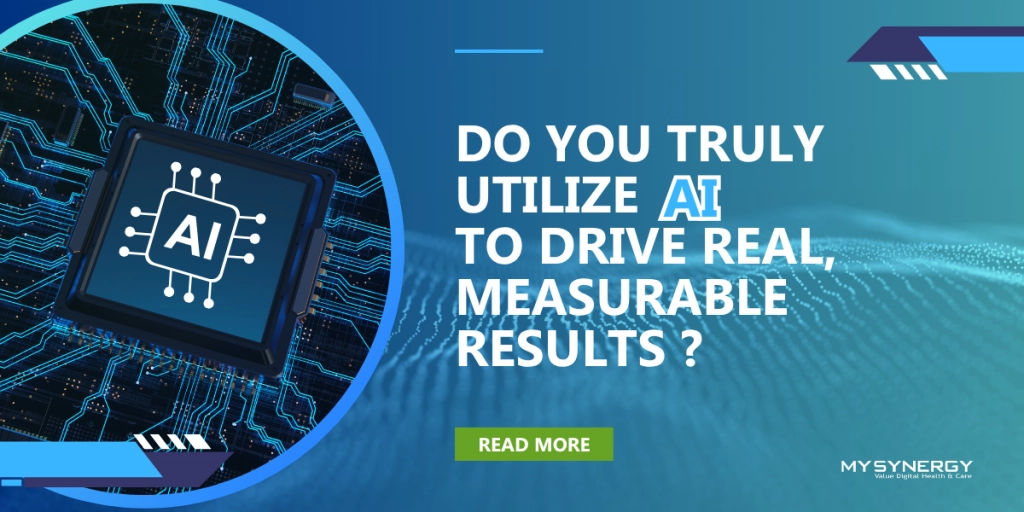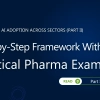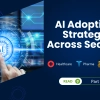Everyone’s Talking About AI—But Are You Using It to Drive Real Results?
These days, it seems like everyone is talking about AI. From boardrooms to social media feeds, the conversation is loud and clear: AI is powerful, transformative, and here to stay.
And yes, its potential is undeniable. But despite the hype, many professionals and organizations still struggle with a fundamental question:
How do you actually use AI to drive real, measurable results in your day-to-day work?
The truth is, AI’s true power is only unlocked when it’s adopted at the individual level. Once employees begin using AI tools effectively in their workflows, the organizational benefits become not just visible but exponential.
Too often, organizations apply AI to low-impact areas or try to automate overly complex processes without a clear ROI.
❌ Overengineering and under-communicating
AI solutions are often built by technical teams without involving the business users who will use them, leading to poor adoption.
❌ Treating AI as a One-Time Tool
Many teams use AI sporadically—testing a chatbot here, trying a writing assistant there—without integrating it into their daily workflows.
❌ Lack of Training and Support
Employees are given AI tools but not the context to understand how they work or how they help them do their jobs better, leading to confusion, underuse, or misuse.
❌ Ignoring individual needs
AI solutions are often deployed top-down, without considering how different roles and departments can benefit in unique ways.
A marketing manager who gets automated performance insights daily, without digging through dashboards.
Or a sales rep who uses an AI Agent to prepare personalized briefings before every client visit.
This is where AI makes a real difference — at the individual level. When employees begin using AI in their daily work, the impact is immediate and measurable. Here are some examples:
✅ Time Savings - automate repetitive tasks (e.g., reporting, data entry, documentation) and reclaim hours every week.
When it helps 200 people do the same, that’s 1,000+ hours saved weekly.
When employees start seeing results, organizations benefit in powerful ways:
AI is no longer a tech trend — it's an operational necessity. But impact doesn’t come from hype. It comes from practical, responsible, and human-centric adoption. The key is to start small: help employees adopt AI in their own workflows, show them the value, and build from there.
Once individuals begin to see results, organizations will too. And with AI Agents, scaling that success has never been easier.
And yes, its potential is undeniable. But despite the hype, many professionals and organizations still struggle with a fundamental question:
How do you actually use AI to drive real, measurable results in your day-to-day work?
The truth is, AI’s true power is only unlocked when it’s adopted at the individual level. Once employees begin using AI tools effectively in their workflows, the organizational benefits become not just visible but exponential.
The Most Common Mistakes in Using AI
❌ Automating the wrong thingsToo often, organizations apply AI to low-impact areas or try to automate overly complex processes without a clear ROI.
❌ Overengineering and under-communicating
AI solutions are often built by technical teams without involving the business users who will use them, leading to poor adoption.
❌ Treating AI as a One-Time Tool
Many teams use AI sporadically—testing a chatbot here, trying a writing assistant there—without integrating it into their daily workflows.
❌ Lack of Training and Support
Employees are given AI tools but not the context to understand how they work or how they help them do their jobs better, leading to confusion, underuse, or misuse.
❌ Ignoring individual needs
AI solutions are often deployed top-down, without considering how different roles and departments can benefit in unique ways.
How AI Can Be Adopted at the Individual Level—and What It Delivers
Imagine a clinical coordinator who can summarize complex patient histories instantly.A marketing manager who gets automated performance insights daily, without digging through dashboards.
Or a sales rep who uses an AI Agent to prepare personalized briefings before every client visit.
This is where AI makes a real difference — at the individual level. When employees begin using AI in their daily work, the impact is immediate and measurable. Here are some examples:
✅ Time Savings - automate repetitive tasks (e.g., reporting, data entry, documentation) and reclaim hours every week.
- Example: A marketing specialist uses an AI Agent to generate campaign reports.
- Impact: Saves 3–5 hours per week, freeing time for strategy and creative work.
- Example: A financial analyst uses AI to cross-check spreadsheets and flag anomalies.
- Impact: Reduces errors by 30%, improving reporting quality.
- Example: A sales rep uses AI to prioritize leads based on predictive scoring.
- Impact: Increases conversion rates by 20% and shortens the sales cycle.
- Example: A content creator uses AI to brainstorm ideas and draft outlines.
- Impact: Speeds up production by 40% while maintaining originality.
From Individual Impact to Organizational Transformation
When AI helps one employee save 5 hours a week, that’s great.When it helps 200 people do the same, that’s 1,000+ hours saved weekly.
When employees start seeing results, organizations benefit in powerful ways:
- Service delivery speeds up when teams accomplish more with fewer resources.
- Teams collaborate more efficiently with AI tools that streamline communication and task management.
- Departments make better decisions, faster, with data-driven insights that lead to more informed decisions.
- Strategic projects get more attention when freed from repetitive tasks, employees focus on creative problem-solving.
What Organizations Must Do to Enable AI Adoption
To unlock AI’s full potential, organizations need to do more than just provide tools—they must create the right environment:- Provide clear use cases - show employees how AI can help in their specific roles. Don’t just say “use AI”—demonstrate it.
- Offer training and support - invest in onboarding, tutorials, and ongoing learning to build confidence and competence.
- Invest in clean, structured, integrated data - no matter how advanced your AI is, poor data means poor results. Start with your data foundation.
- Integrate AI into existing workflows - make AI tools accessible within the platforms employees already use—email, chat, project management, etc.
- Embed compliance into every step - AI must be compliant by design, not as an afterthought.
- Involve both technical and business stakeholders - AI success depends on alignment — IT builds it, but business teams must shape and champion it.
AI Agents: The Easiest Way to Scale AI Adoption
Among the most effective ways to bring AI into everyday workflows is through AI Agents — intelligent, task-specific digital assistants that act like team extensions. Why do they work so well?- Smart – They understand context, data, and goals
- Configurable – Easily tailored to your workflows and systems
- User-friendly – No steep learning curve; just natural interaction
- Highly Effective - AI Agents can handle everything from summarizing documents and scheduling meetings to analyzing data and managing customer support.
- Scalable Across Teams - Once built, AI Agents can be shared across departments, multiplying their impact.
- Quick to deploy – No need to rebuild your entire infrastructure
- Secure & Compliant – Built with privacy, access control, and auditability in mind.
Where AI Agents make the biggest impact
- Pharmaceuticals
- Automating medical and sales reporting
- Managing drug sample requests
- Supporting HCP engagement and compliance workflows
- Healthcare Providers
- Assisting with scheduling, documentation, and patient follow-ups
- Enhancing patient support and communication
- Summarizing lab results and medical notes
- Universities & Research
- Supporting faculty with literature reviews, data summaries, and research insights
- Helping administrative staff with onboarding, course updates, and reporting
Start Small, Think Big
AI is no longer a tech trend — it's an operational necessity. But impact doesn’t come from hype. It comes from practical, responsible, and human-centric adoption. The key is to start small: help employees adopt AI in their own workflows, show them the value, and build from there.Once individuals begin to see results, organizations will too. And with AI Agents, scaling that success has never been easier.





